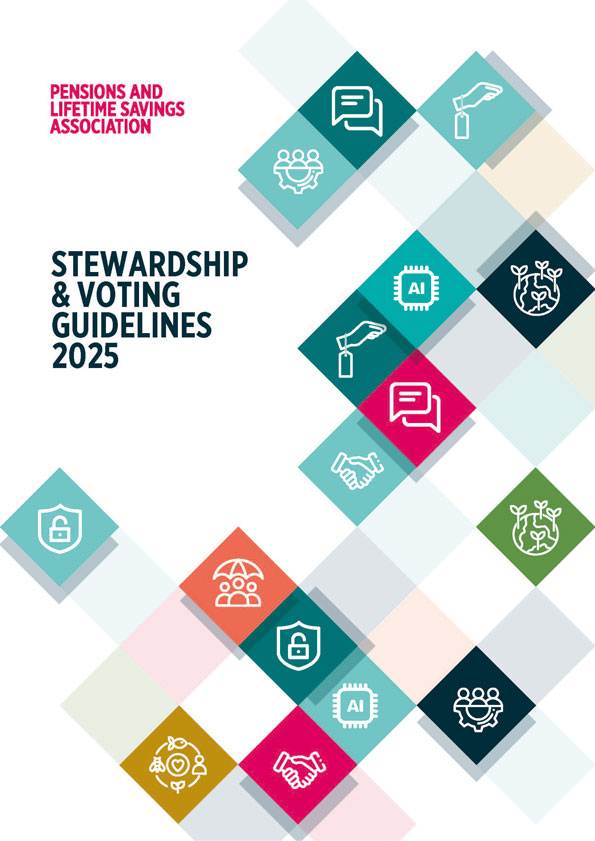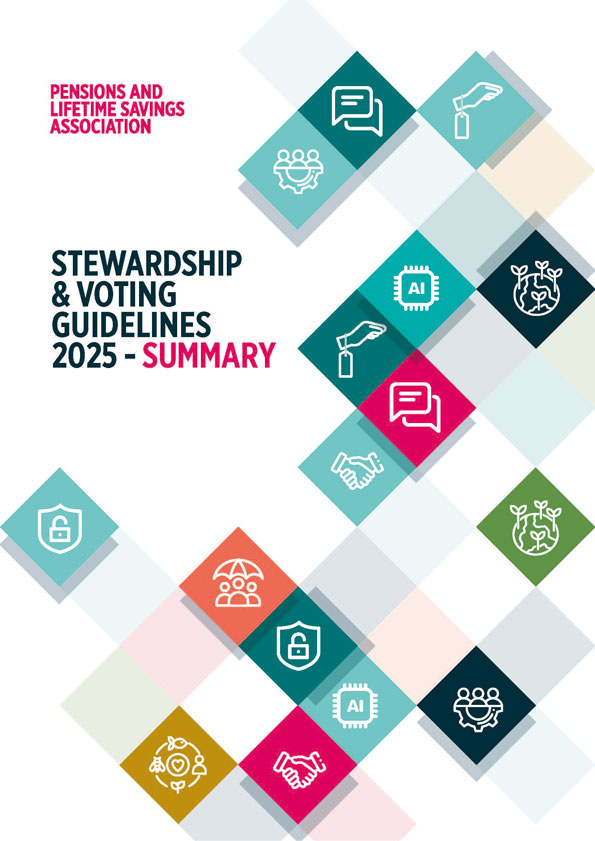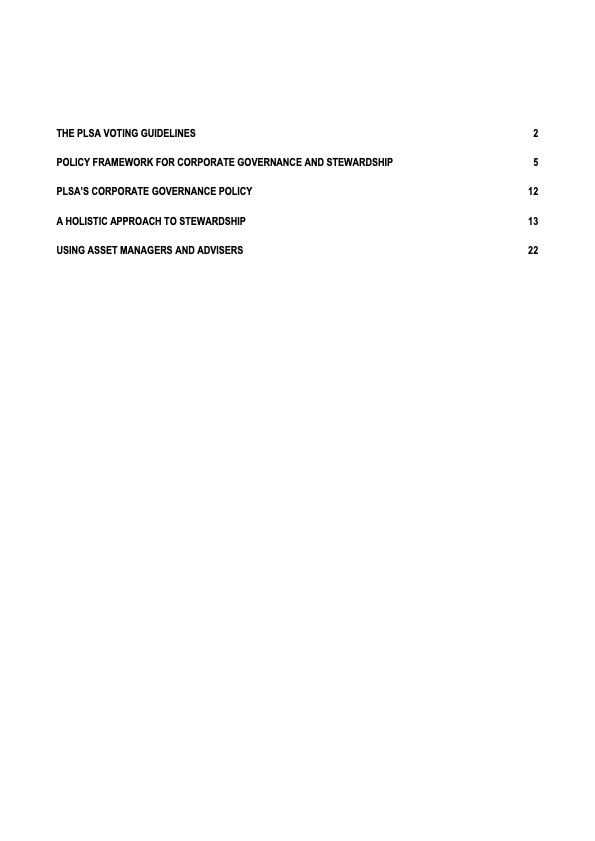PLSA Stewardship & Voting Guidelines 2025



The PLSA’s Stewardship and Voting Guidelines 2025 provide a framework for pension schemes trustees and their advisers to drive responsible investment and influence positive corporate behaviour globally.
Our detailed voting recommendations ensure your organisation plays an active role in shaping corporate governance and holding companies accountable.
From climate action to workforce diversity and responsible capital allocation, the guidelines outline clear principles to assess and engage with companies for sustainable long-term value.
In the 2025 edition of the Stewardship and Voting Guidelines, we consider:
- Recent political and economic events that have a direct impact on stewardship issues for investors.
- The impact on shareholder rights caused by changes to the UK listings rules and AI developments.
- Sustainable finance developments, including the new Government’s focus on this area, and the PLSA’s efforts to increase the focus on considering nature as part of good company practice.
- Social factor developments, including the DWP Taskforce on Social Factors and the PLSA’s social factor case studies.
- Workforce developments, including issues such as maternity and paternity pay and leave policies, and ethnicity and disability pay reporting.
Visit the PLSA member area to find our easy-to-navigate full report, practical summary and the static chapters, which is where we would recommend anyone new to the guidelines should start.
Full report Practical summary Static chapters
We may make this guidance or sections of it available to certain non-members of the PLSA - please get in touch. If your employer is a PLSA member create an account then return to this page and follow the links above to download the guidelines.